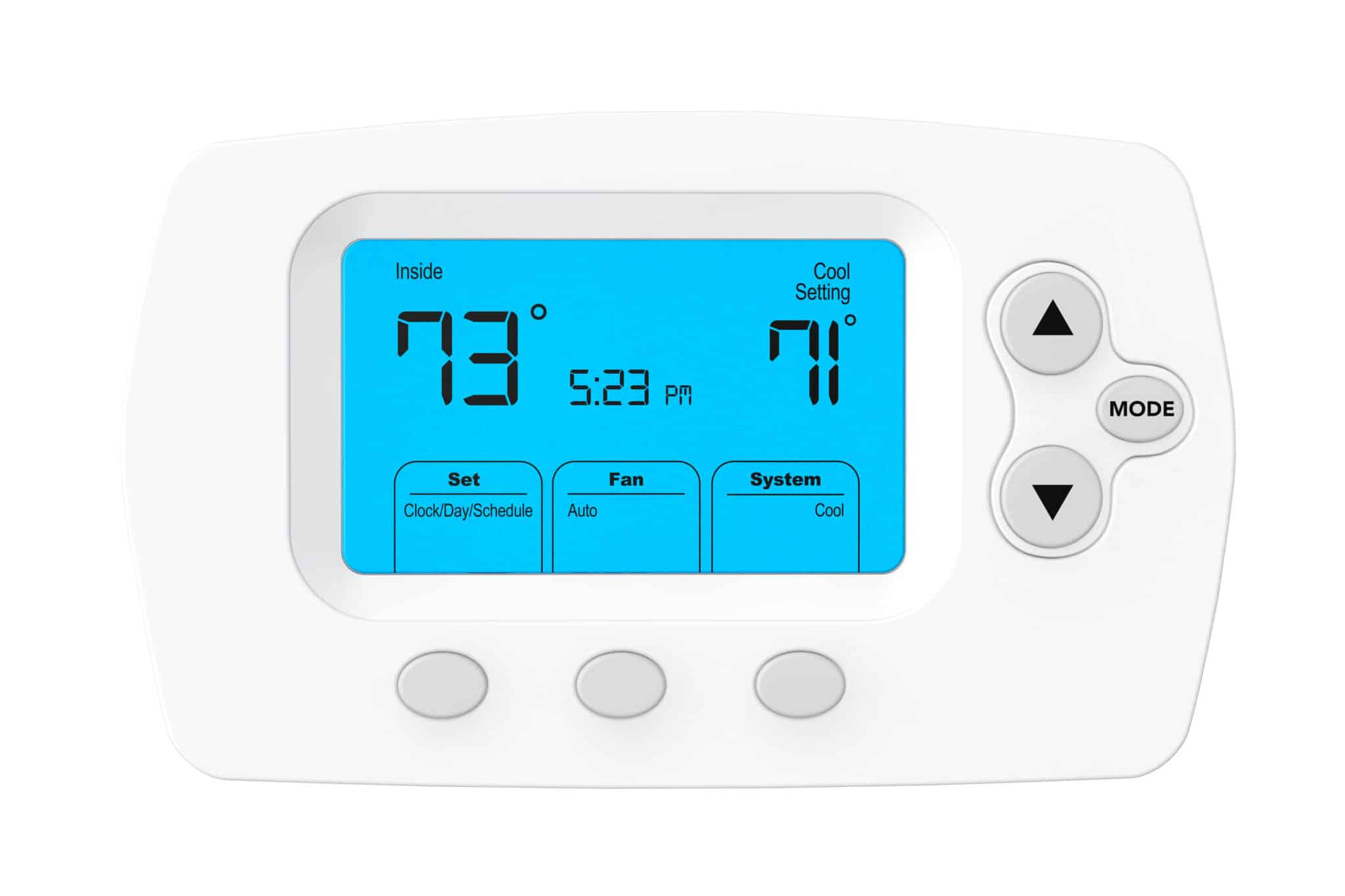
Energy Savings for Split-Level Homes with Zoned HVAC
Energy savings have become a priority for homeowners, especially those living in split-level homes. These uniquely designed properties often face challenges with uneven heating and cooling due to their multi-level structure. This issue not only disrupts comfort but also drives up energy bills as traditional HVAC systems overwork to maintain balance across floors.
Zoned HVAC systems provide an innovative and practical solution to this problem. By dividing the home into separate zones, these systems allow precise temperature control for each area. This targeted approach minimizes energy waste by focusing on heating or cooling efforts only where they are needed. For split-level homeowners looking to lower utility costs and improve comfort, zoned HVAC systems represent a smart, energy-efficient investment.
Understanding Split-Level Home Dynamics
Split-level homes, known for their creative use of space, often face unique challenges when it comes to heating and cooling. Their architectural design, featuring staggered floors and semi-open layouts, creates microclimates where certain areas feel significantly warmer or cooler than others. These inconsistencies aren’t just inconvenient—they drive up energy use as systems work harder to maintain an even temperature.
The split-level layout complicates energy efficiency because traditional HVAC systems are not designed to handle such diverse needs. When treated as a single zone, these homes experience inefficient heating and cooling cycles. For example, heat tends to rise, making upper levels uncomfortably warm in the summer, while lower levels struggle to retain heat in the winter. This uneven distribution results in overworked systems, higher utility bills, and inconsistent comfort.
Beyond comfort, the impact on energy usage is significant. Inefficient heating and cooling can account for a substantial portion of household energy consumption. In homes with split-level designs, this inefficiency is amplified, leading to missed opportunities for energy savings.
Zoned HVAC systems provide a compelling solution to this problem. By dividing the home into distinct zones with individual temperature controls, these systems can address the unique needs of each area, optimizing comfort and reducing energy waste.
What is a Zoned HVAC System?
A zoned HVAC system is a modern solution for energy savings and enhanced comfort in homes with complex layouts. Unlike traditional systems that treat the entire home as a single temperature zone, a zoned system divides the space into multiple areas, each controlled by its own thermostat. This customization is made possible by motorized dampers within the ductwork, which regulate airflow to each zone based on individual temperature preferences.
For split-level homes, this technology is transformative. These homes often face temperature inconsistencies, with upper levels overheating in the summer and lower levels staying chilly in the winter. Zoned systems directly address these issues by delivering precise heating or cooling to the areas that need it most. Instead of wasting energy by conditioning the entire home, a zoned HVAC system allows you to optimize climate control for specific spaces, such as bedrooms, living areas, or basements.
The benefits extend beyond comfort. By reducing the workload on the HVAC system, zoning minimizes energy waste and leads to noticeable cost savings. It also reduces wear and tear on equipment, increasing its lifespan. For homeowners seeking a practical and energy-efficient way to manage temperature inconsistencies, zoned HVAC systems offer a clear path to greater energy savings and improved living conditions.
Benefits of Zoned HVAC Systems in Split-Level Homes
Split-level homes are unique in design but notoriously challenging when it comes to maintaining consistent temperatures. Zoned HVAC systems provide a transformative solution to these issues, delivering improved comfort, increased system efficiency, and significant energy savings.
Customized Temperature Control
The primary advantage of a zoned HVAC system is its ability to create distinct climate zones within a home. For split-level homes, where upper levels can feel overly warm while lower levels remain chilly, this level of control is invaluable. Each zone is equipped with its own thermostat, allowing homeowners to set temperatures independently. This targeted approach eliminates discomfort and ensures that every part of the home, whether a bedroom, living room, or basement, is at its optimal temperature.
Maximized Energy Savings
Energy savings are one of the most compelling benefits of zoned systems. Unlike traditional HVAC systems that heat or cool the entire home regardless of need, zoned HVAC systems focus energy only where it’s required. This reduces unnecessary energy consumption, translating to noticeable decreases in utility bills. In split-level homes, where temperature imbalances often cause systems to overwork, the energy savings from zoning can be especially significant.
Enhanced Equipment Longevity
Zoned HVAC systems not only save energy but also extend the life of the equipment. By reducing the strain on the system, wear and tear is minimized. This leads to fewer breakdowns, lower maintenance costs, and a longer operational life. Homeowners benefit from reliable performance and avoid the expense of frequent repairs or replacements.
Environmentally Friendly Savings
In addition to the financial benefits, zoned HVAC systems contribute to environmental sustainability. By optimizing energy usage and eliminating waste, these systems help reduce a home’s carbon footprint. Split-level homeowners can enjoy the dual benefits of energy savings and eco-friendly living, knowing they are making a positive impact on the environment.
For split-level homeowners, zoned HVAC systems offer unmatched comfort, energy savings, and long-term value. By addressing the unique challenges of their design, these systems are a smart investment for a more efficient and comfortable home.
Energy Savings Potential
Zoned HVAC systems are revolutionizing how homeowners manage energy use, offering an unparalleled opportunity for energy savings in split-level homes. By focusing on the unique heating and cooling needs of specific zones, these systems eliminate energy waste and deliver precise climate control.
Efficient Use of Energy
Traditional HVAC systems treat an entire home as a single zone, often leading to over-conditioning in areas that don’t need it. Zoned HVAC systems solve this by heating or cooling only the spaces in use. This targeted approach reduces energy waste, as you’re no longer paying to condition empty rooms or levels that already meet the desired temperature.
Balanced Temperature Control
Split-level homes often face challenges with uneven temperatures, causing systems to work harder than necessary. Zoned systems balance this by addressing the specific needs of each level. For instance, during winter, heating can be concentrated on lower levels that tend to lose heat, while summer cooling can focus on warmer upper floors. This adaptability directly translates into energy savings.
Proven Energy Reduction
Studies show that zoned HVAC systems can reduce energy consumption by up to 30% compared to traditional systems. For split-level homeowners, this means lower utility bills and long-term savings. Over time, these systems effectively pay for themselves by decreasing monthly energy costs.
Sustainable Living
Beyond financial benefits, zoned HVAC systems contribute to sustainable living by minimizing a home’s carbon footprint. By consuming less energy, these systems support environmentally conscious homeowners in achieving energy efficiency without sacrificing comfort.
For split-level homeowners, investing in a zoned HVAC system is a smart decision, offering immediate comfort improvements and significant energy savings that add up over time.

Implementing Zoned HVAC in Existing Split-Level Homes
Upgrading an existing split-level home with a zoned HVAC system can revolutionize your living space, offering personalized comfort and meaningful energy savings. Retrofitting may seem daunting, but modern technology and professional expertise make it both achievable and rewarding.
Evaluate Your Current Setup
The process begins with a thorough assessment of your home’s existing HVAC system and layout. Split-level homes, known for their distinct levels and varying temperature zones, are perfect candidates for zoning. A professional will evaluate your ductwork and HVAC unit to determine compatibility and identify potential adjustments for seamless integration.
Install Motorized Dampers
Zoned HVAC systems rely on motorized dampers installed within the ductwork to regulate airflow to designated zones. These dampers adjust based on thermostat settings, ensuring each zone receives the precise amount of heating or cooling needed. Retrofitting dampers into existing ductwork is often straightforward and minimally invasive, making it an efficient way to enhance your home’s climate control.
Upgrade to Zone-Specific Thermostats
Each zone requires its own thermostat for individualized temperature control. Many homeowners choose smart thermostats, which provide advanced scheduling options and remote access via mobile apps. This allows for effortless management of zones, ensuring maximum energy savings without compromising convenience.
Optimize Performance and Maintenance
Once installed, your system needs fine-tuning to perform at its best. This involves testing the dampers, calibrating thermostats, and ensuring balanced airflow. Routine maintenance, like inspecting ductwork and cleaning filters, keeps your system efficient and extends its lifespan.
The Benefits
The transformation is immediate: consistent comfort throughout your home, targeted temperature control, and lower energy bills. By focusing heating and cooling efforts only where they’re needed, zoned HVAC systems offer significant energy savings while enhancing your home’s overall functionality.
Investing in a zoned HVAC system for your split-level home combines improved comfort with smart energy management, making it a valuable upgrade for any homeowner.
Maintenance and Best Practices
Maintaining a zoned HVAC system in Irving, TX, is essential for homeowners looking to optimize comfort and achieve long-term energy savings. Regular maintenance not only ensures consistent performance but also extends the life of your system, making it a valuable investment.
-
Keep Air Filters Clean
In Irving’s demanding climate, HVAC systems work year-round. Dirty filters reduce airflow, forcing your system to overwork and waste energy. Replacing filters every one to three months ensures maximum efficiency and keeps your home’s air clean and fresh.
-
Inspect Ductwork for Leaks
Efficient ductwork is critical for a zoned system. Even minor leaks can disrupt airflow, undermining energy savings and reducing comfort. Regular inspections by a professional can identify and seal leaks, ensuring your zoned system delivers targeted heating and cooling without waste.
-
Maximize Thermostat Efficiency
Smart thermostats are a game-changer for zoned HVAC systems. In Irving, where temperatures can vary dramatically, program thermostats to focus energy on occupied zones while minimizing usage in empty areas. This simple adjustment can lead to substantial energy savings and enhanced comfort.
-
Monitor Damper Performance
Motorized dampers regulate airflow to specific zones, making them vital to your system’s success. Over time, they may wear out or need adjustment. Periodic checks ensure dampers are functioning correctly, maintaining balanced airflow, and maximizing your energy efficiency.
-
Schedule Professional Tune-Ups Annually
Given Irving’s hot summers, HVAC systems face heavy workloads. Professional tune-ups can catch small issues early, like refrigerant imbalances or worn components. These proactive measures ensure your system operates efficiently and avoids costly repairs, keeping energy savings consistent.
-
Adopt Energy-Saving Habits
Complement your zoned system’s efficiency by sealing windows, blocking excessive sunlight with blinds, and keeping vents free of obstructions. These easy steps reduce strain on your system and boost its performance.
By following these best practices, Irving, TX, homeowners can enjoy a zoned HVAC system that not only delivers superior comfort but also ensures significant energy savings. A well-maintained system is your key to reliable performance and lower utility bills, making it a smart choice for any split-level home.
Comparing Zoned HVAC Systems to Traditional Systems
When deciding on the best HVAC solution for a split-level home, understanding the distinctions between traditional and zoned systems is critical. Zoned HVAC systems provide targeted solutions to comfort and energy challenges that traditional systems cannot address.
Energy Efficiency: Focused vs. Generalized
Traditional HVAC systems operate under a single-zone model, which treats the entire home uniformly. This method often results in over-conditioning unused areas, wasting energy, and driving up costs. Zoned HVAC systems divide the home into distinct zones, conditioning only the spaces in need. This focused approach translates directly into significant energy savings, with some homeowners reducing energy use by up to 30%.
Tailored Comfort: Precision vs. Uniformity
Split-level homes often face uneven temperature distribution, with upper levels staying too warm and lower levels remaining chilly. Traditional systems struggle to manage these imbalances, leaving homeowners frustrated. Zoned systems allow customized temperature settings for each zone, ensuring consistent comfort throughout the home. Whether it is a cozy basement or a cooler bedroom, zoned systems create the perfect environment in every area.
Operational Costs: Efficiency vs. Waste
While traditional systems may have a lower upfront cost, their inefficiencies lead to higher utility bills over time. Zoned systems, though requiring a greater initial investment, quickly offset this with reduced operational costs. By minimizing unnecessary energy use, zoned systems deliver immediate and long-term savings.
System Longevity: Less Stress, Longer Life
Traditional systems frequently run at maximum capacity to maintain comfort, causing wear and tear that shortens their lifespan. Zoned systems experience less strain by focusing energy where it’s needed most, extending the life of the equipment and reducing repair costs.
Environmental Impact: Sustainability vs. Excess
Zoned HVAC systems offer an environmentally friendly advantage by reducing energy consumption. By using only the energy necessary to heat or cool specific zones, these systems contribute to a smaller carbon footprint, aligning with sustainable living goals.
Conclusion
For split-level homeowners, zoned HVAC systems outshine traditional models in efficiency, comfort, and cost-effectiveness. They provide superior energy savings, personalized comfort, and longer system life, making them the smart choice for modern living.

Additional Energy-Saving Tips for Split-Level Homes
Achieving maximum energy savings in split-level homes requires a combination of smart practices and thoughtful upgrades. Beyond installing a zoned HVAC system, these tips can further enhance efficiency and lower utility costs.
Seal Gaps and Insulate Strategically
Air leaks around windows, doors, and ductwork can significantly undermine energy efficiency. Use caulk, weatherstripping, or foam to seal gaps. Proper insulation in walls, attics, and basements prevents heat transfer, keeping your home comfortable year-round while reducing HVAC workload.
Leverage Natural Light and Window Treatments
During winter, open blinds and curtains to let sunlight naturally warm your home. In summer, close them to block excess heat. Energy-efficient window films or insulated drapes provide an added layer of protection against temperature extremes.
Use Ceiling Fans to Circulate Air
Ceiling fans complement HVAC systems by redistributing air efficiently. Set fans to spin counterclockwise in summer to create a cooling breeze. Reverse the direction in winter to push warm air downward, helping reduce heating demands.
Optimize Thermostat Settings
Smart thermostats offer advanced features to reduce energy waste. Program different temperatures for occupied and unoccupied zones or adjust settings based on your schedule. Seasonal tweaks can deliver noticeable energy savings without sacrificing comfort.
Maintain HVAC Systems Regularly
Even the most efficient systems need routine maintenance. Change filters every few months, inspect ductwork for leaks, and schedule annual tune-ups. These simple steps keep your system running efficiently, ensuring consistent energy savings and extended equipment lifespan.
By adopting these energy-saving strategies, homeowners in split-level homes can further reduce energy costs while enjoying a comfortable, eco-friendly living environment.
FAQ
-
What are the costs associated with installing a zoned HVAC system?
Installation costs for a zoned HVAC system depend on factors like home size, the number of zones, and existing system compatibility. While initial costs may be higher than traditional systems, homeowners quickly recoup expenses through improved comfort and substantial energy savings over time.
-
How many zones are ideal for a split-level home?
The number of zones varies based on the home’s layout and specific heating and cooling needs. Most split-level homes benefit from three to four zones, allowing each level and heavily used areas like living rooms or bedrooms to have independent temperature control.
-
Can I retrofit my existing HVAC system for zoning?
Yes, retrofitting an existing system for zoning is a practical option. By adding motorized dampers and zone-specific thermostats, you can transform your current HVAC setup into an efficient, energy-saving solution without replacing the entire system.
-
What maintenance does a zoned HVAC system require?
Zoned systems require regular upkeep, such as changing air filters, inspecting ductwork, and ensuring dampers function smoothly. Annual professional tune-ups ensure the system runs efficiently, delivering consistent energy savings and optimal performance.
-
How does a zoned system improve indoor air quality?
By controlling airflow precisely, zoned systems prevent over-conditioning and reduce stagnant air in unused spaces. When paired with high-quality filters, they effectively remove dust, allergens, and pollutants, ensuring healthier indoor air for your family.
Take control of your comfort and energy savings with a zoned HVAC system designed to meet the unique needs of your split-level home. At One Hour Air Conditioning & Heating of Dallas, we provide expert solutions to eliminate uneven temperatures and reduce energy costs. Do not wait to upgrade your home’s efficiency and comfort—contact us today and discover the difference a tailored HVAC system can make!






